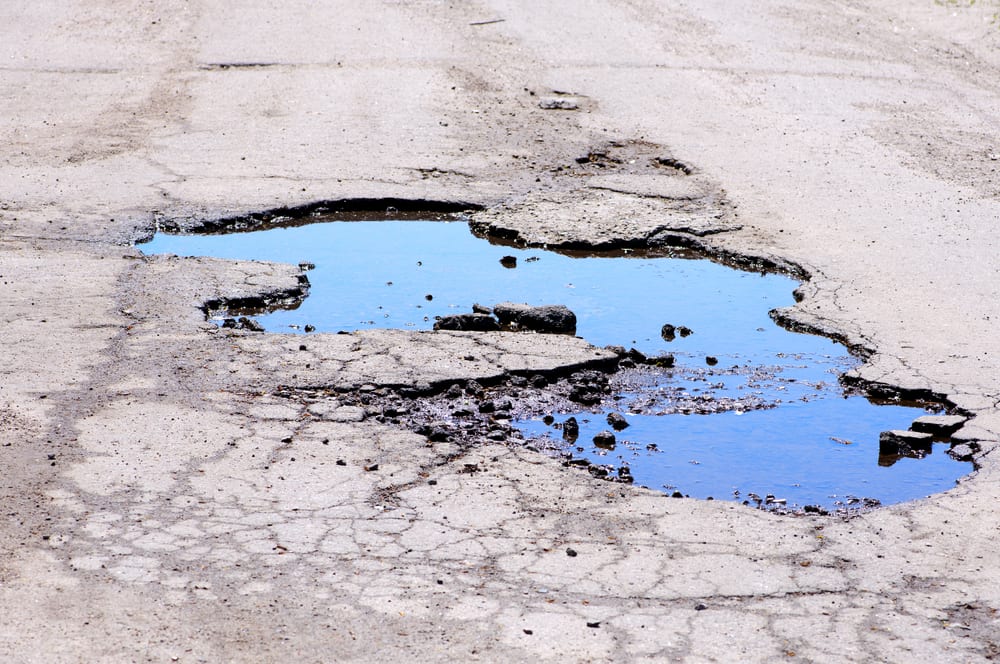

Every time the weather gets colder it seems as if new, annoying potholes spring up overnight. If you’re lucky you might avoid one, but you can bet there’s another waiting just ahead to give you and your vehicle a major jolt. Keep reading to find out the essential things you should know about potholes.
How They Happen
Potholes are formed when water makes its way into the ground. Once there, cold winter temperatures can cause it to freeze, which results in expansion that disrupts the pavement. Later on, the combination of the thawing water and vehicles running over the spot result in the pavement being pushed down into the hole caused by the freezing and thawing, thus forming a pothole.
Avoiding Potholes
While there are some potholes you can see easily and drive around, there are many others that are lurking in areas you can’t see. When spring arrives (or another freeze/thaw cycle hits) beware of puddles. Even if you’re driving on roads that don’t have them often, potholes can hide quite nicely in puddles, resulting in that jarring – and potentially damaging – hit when your wheel finds one. The best way to avoid this is to drive a bit more cautiously and pay attention. Watch the car in front of you. If it hits one, you will better be able to avoid it!
Speeding Doesn’t Help
There’s a pesky myth out there that going fast over a pothole will help minimize the bump. This simply isn’t true, and will likely result in even more damage if you hit it hard enough – you’ve seen those cars with flat tires right after a serious pothole, right? Yeah, they likely drove over it too fast.
Brake, but Not Too Much
While it’s best to go over potholes slowly, you should avoid braking immediately before you hit one. This will likely cause your vehicle to nosedive right as you hit it, which can increase the amount of damage that can occur. You should also make sure to let off of your brakes right before your tire comes in contact with the hole as well. This will help your vehicle absorb more of the blow, rather than the brunt being solely on the tire and wheel.
Check for Damage
Once you’ve hit a pothole, check for damage as soon as possible – even if nothing is noticeable. A bent rim or damage to the tire can happen without you being aware of it. Additionally, if you notice your car is pulling to one direction or the other immediately after, you’ve likely damaged the suspension.



